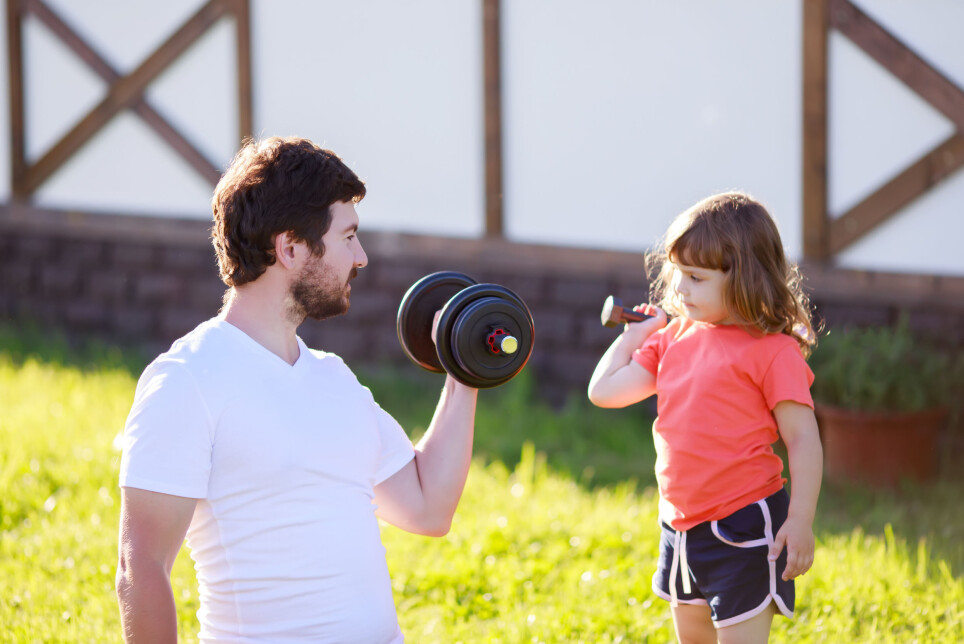THIS ARTICLE/PRESS RELEASE IS PAID FOR AND PRESENTED BY the University of South-Eastern Norway - read more

Humans are 99 per cent the same, yet so different
A new USN study exploring the role of genetic variants, sex and age in the general population and cross-country skiers leads to surprising results.
We have all noticed among our friends and family—some are more physically active, while are better at sport or exercise, but not in all types of sport. What is the reason for that? Is it nature, or nurture?
If all humans are 99 per cent genetically identical, does that mean that the one per cent difference in DNA contributes to these differences amongst us?
Sannija Goleva-Fjellet, a researcher at the University of South-Eastern Norway (USN), who recently defended her PhD thesis explores how physical activity levels, muscle strength and athletic performance are traits determined by a complex set of factors including age, sex and genetics. “My thesis is about how the selected genetic variants, sex and age of a person influences how physically active they are, how strong they are and how well they respond to strength training,” says Goleva-Fjellet, “Additionally, I was also looking at how these factors influence the endurance performance of cross-country skiers.”

Testing training
At the beginning of the study, Goleva-Fjellet and her team took blood samples from the participants to study the DNA and determine the genotype of a person. In one of the studies, 76 participants from the general public aged 20-70 years, recruited locally, took part in an eight-week maximal strength training program using a leg-press machine. Maximal strength tells you how much force you manage to produce during one lift or one repetition. In other words, it tells you how strong you are during one lift.
“The training of the participants in this study was purely based on the program we gave them—train leg-press three times a week: four sets of four repetitions each,” says Goleva-Fjellet. The participants also continued with their normal routines in this study period.
Training as you get older
The conclusions from this particular study confirmed some of the results that previous research had made—that men were stronger than women, and younger people were stronger than the older. They also observed a decline in muscle strength in older participants due to age. “What was new in our study is how well the individuals responded to the training independent of their age and sex,” says Goleva-Fjellet.
This is good news says Goleva-Fjellet. The World Health Organization recommends older adults do varied, multicomponent physical activity in addition to muscle-strengthening activities at moderate or higher intensity involving all major muscle
groups at least two or more days a week. “This study shows that if you decided to get into strength training at a later stage in your life, you could significantly improve your muscle strength, which is especially beneficial for older people and women who are more prone to bone fractures,” says Goleva-Fjellet.
Observing athletes
The other part of Goleva-Fjellet’s research comprised of observing regional to national level cross-country skiers. “Like our first study, we sampled the blood of the athletes—the difference in this study was that instead of us giving them exercises, they continued to train as they were supposed to with their coaches for six months,” she says. Her team followed the athletes as they logged their exercise to prepare for the winter season.
“The dream of every athlete is to improve their performance and endurance—six months is a large period in the year, and we wanted to see whether those months of training influenced how well they performed in their sports,” says Goleva-Fjellet.
The athletes got tested at the beginning, in the middle and at the end of the six months, and the results showed that there weren’t significant improvements in any of the variables that may be important for endurance performance. “This is an important finding because of the way they train—focusing on increasing the volume of exercise and not the intensity—do not produce any measurable improvements,” says Goleva-Fjellet.
The sample size for her research was relatively small, but Goleva-Fjellet says there is a lot of room for future research on this subject. “Future research could increase the sample size and could look at what will happen to athletes’ performance if they increase the intensity of training without increasing the volume,” she says.
Genetic links
Goleva-Fjellet explains that through the research, they were able to show some genetic variants likely influenced traits like muscle strength and trainability (the response to training).
“Some versions of the genetic variants appeared to lead to higher muscle strength and/or better response to strength training,” she says, adding, “However, despite the differences in the genetic make-up, all participants in our study responded well to maximal strength training and increased the strength”.
Never too late to train
Goleva-Fjellet says that her study of the genetic variants and endurance performance may not mean much to an individual, but it does improve the knowledge base. “There are two sides—the genetic side and the hope is that my findings can contribute to better understand why people may have different physical activity levels, why people respond differently to, for example, in strength training,” she says, “And then is the issue of the endurance abilities of athletes—they have both been studied for a while but there are still unanswered questions.
Most importantly, Goleva-Fjellet hopes that the take-home message from the study is the importance of resistance training.
“Do as many exercises as you can, but don’t forget strength training—it is not just me and my colleagues here saying it, but the WHO is saying it, add variation to your exercise,” says Goleva-Fjellet adding; “It improves your balance and you avoid injury, so there are only benefits”.
“And the good news is that it is never too late to add strength training to your daily life.”
See more content from the University of South-Eastern Norway:
-
Urban development involves much more than buildings, roads, and green spaces
-
School refusal: 8 out of 10 kids perceive school to be an unsafe place
-
We become less polite when we are shopping
-
Warmer climate enables ticks to survive in the high mountains
-
Norwegian researchers reject that Northern Norway is part of the Arctic
-
Community response is vital for social recovery from mental health and substance abuse issues






































